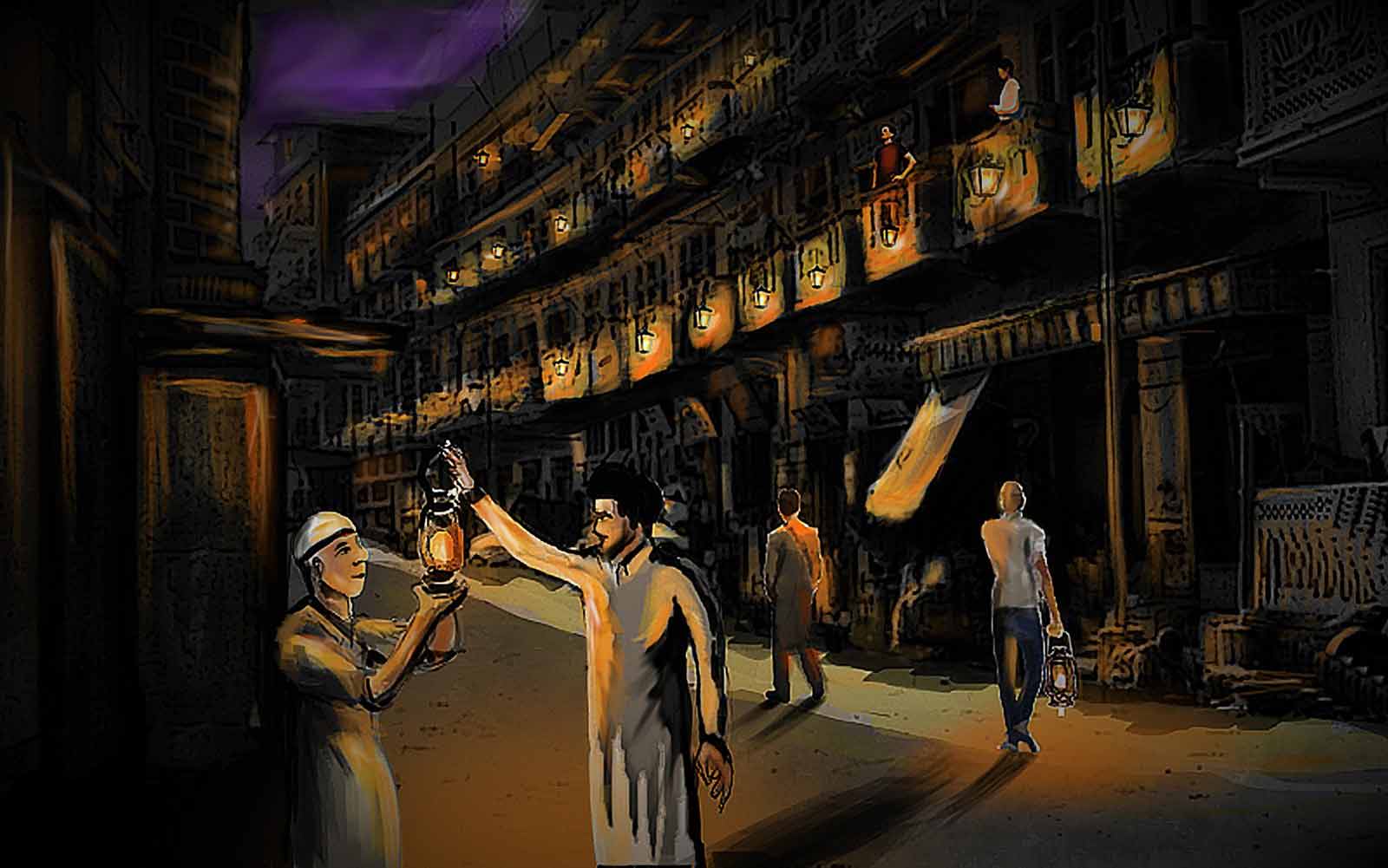

Every evening at the sunset, inhabitants of Burns Road area would hang lanterns from their windows and roof drains.
Area residents supported one of the leading founders of Pakistan, Fatima Jinnah, whose electoral symbol was lantern when she ran for the presidential election in 1965 against the then president Field Marshal Ayub Khan.
“I can’t explain in words the attractiveness of the sight – lanterns put in line on balconies, hanged from roof drains would hold anyone’s attention passing by the area,” said senior journalist Shameem Bano, who has been living in Burns Road area since her birth.
“Supporters of Fatima Jinnah used to supply oil to households for lanterns. It was if the Burns Road inhabitants wanted to shun the darkness of dictatorship by shinning their lanterns,” Bano said, recalling her childhood days.
She, however, regretted the defeat Muhammad Ali Jinnah’s sister by the five-star army general who was reelected as the president of the country.
“It came as a shock to the area dwellers as they were wholeheartedly supporting the real face of democracy, “she said, adding that the inhabitants of Burns Road area felt a mounting dismay at the elections results.

Office of Jamiat Ulema-i-Pakistan (JUP) at Fresco Chowk
“But people of the area showed resilience as they continued supporting democracy and actively took part in political activities,” she said.
“Just like Karachi is the hub city of Pakistan, the Burns Road area used to be the hub of the metropolitan.”
Chipping in the conversation, Shameem Bano’s husband, journalist Rafique Shaikh, said people who settled down at Burns Road area after the Partition hailed from Delhi, Mumbai and Indian Gujrat.
“Since they were both politically aware and affluent, the migrants who came from India actively played their part in political activities.”
He said mostly Urdu speaking people were now living in the area who belonged to the Dehli Pujabi Saudgran. “The Memon, Guddi and Qureshi communities also reside here.”

In the 1970s, he said, Liaquatabad and the Burns Road area were the central stage of political activities. “Political pundits used to say in the 70s that the country’s political culture could be witnessed by the political movements being put together in these areas.”
Recalling a rally taken out from the Karachi airport to Burns Road by retired Air Marshal Asghar Khan, who founded his party the Thehreek-e-Istiqlal, Shaikh said it took the rally around 18 hours to reach Burns Road from the airport.
“Backed by the Pakistan National Alliance (PNA) that consisted of nine political parties, Asghar Khan organised a massive rally at Burns Road as part of the election campaign in 1977.”
Since Shah Ahmad Noorani’s Jamiat Ulema-e-Pakistan was part of the PNA, the party helped Khan pull a large crowed as it had a deep religious and political influence in the Burns Road area, he added.
Shameem Bano said Shah Ahmed Noorani used to lead Taraweeh prayers in Jinnah Masjid near Burns Road at his party’s central office that was located at a building opposite to the Fresco Sweets at Burns Road.
“The office is still there. But later on it was made the city’s head office.”
The two journalists maintained that the Pakistan People’s Party (PPP) could never garner support in the Burns Road area.
“Zulfikar Ali Bhutto managed to hold a big rally in the area in 1977 to counter the Asghar Khan’s show of political strength,” said Shaikh, but his wife added that some residents chanted slogans against the PPP during the rally.
Constituency
The Burns Road area, which now falls under NA-250 and PS112, was earlier part of NA-191 and PS87, said Faheem Zaman ex-KMC Administrator.
After the Muttahida Qaumi Movement stood as the majority party in the 90s, it took hold of the area.
“Affluent families started moving to posh localities, as the dynamics of Burns Road were changing rapidly.”
He said the area was dominated by the MQM and other political parties were left with no political room.
Rafique Shaikh said wide streets of the area became smaller and smaller due to encroachment and illegal settlements. “Low income and lower middle-income families can now be seen in the area.”
Recalling the 1992 operation against MQM, he said the area saw immense violence. “It was a horrible time, political and cultural activities died in the area.”
Shameem Bano recalled that student movements were also led from this area due to the presence of famed institutes like the DJ Science College and the SM Law College in the vicinity.
“Since leading media houses are situated near Burns Road, any clash between student organisations and law enforcers used to make headlines in the next day newspapers.”

Famous Jinnah Masjid
Danial Zuberi, Zunaira Danial
Engineer Danial Zuberi, 25, a teacher by profession, lives in a flat on Burns Road. His daughter, Zunaira Danial, hasn’t seen balconies decked with lanterns during an election like Shameem Bano saw in her childhood.
“I know many residents of the area who voted for PTI [Pakistan Tehreek-e-Insaaf] in the 2013 elections. But nobody wanted to speak their heart out due to the political tension,” Danial said.
He, however, said the PTI candidates, MNA Dr Arif Alvi and MPA Khurram Sher Zaman, disappointed voters with their performance.
“We face an acute traffic congestion every day. Nobody seems to have a plan to remove encroachments and deal with vendors blocking most of the arteries.”
He said despite the fact that residents voted for the PTI in a difficult condition, the party seemed least bothered about maintaining its popularity in the area through good governance.
“I remember that [Pak Sarzameen Party chief] former city nazim Mustafa Kamal carried out uplift work in the area. During rains, Burns Road used to be flooded with water coming from II Chundrigarh Road. After his departure from the city, the area seldom saw any development work.”








